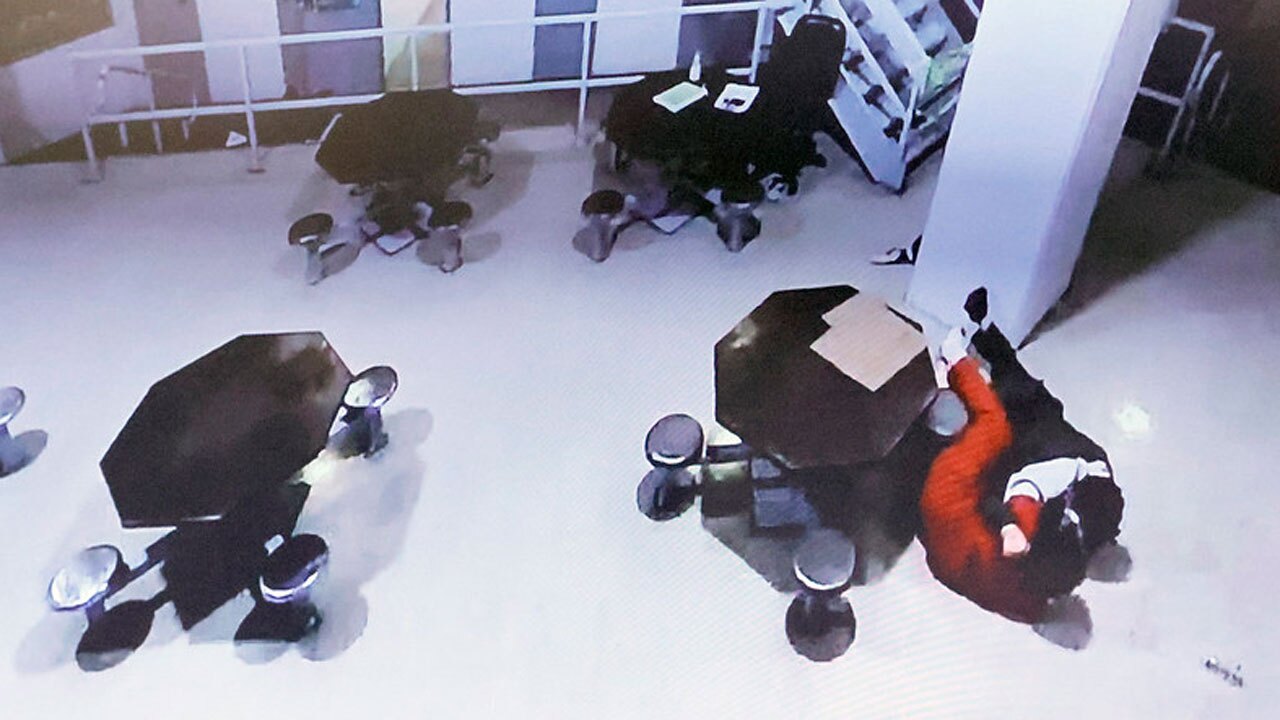FORT LAUDERDALE, Fla. — A jail guard testified Wednesday that Parkland school shooter Nikolas Cruz attacked him with little warning nine months after Cruz murdered 17 students and staff at Marjory Stoneman Douglas High School four years ago and tried to wrest away his electric stun gun.
As jurors in Cruz's death penalty trial watched a surveillance video of the Nov. 13, 2018, brawl, Broward County sheriff's Sgt. Raymond Beltran gave a play-by-play description. He said it began after he told Cruz to walk properly as he supervised Cruz’s recreation period.
Cruz was being jailed in isolation for the Feb. 14, 2018, massacre. The video shows Cruz in an orange jail uniform and a pair of shower slippers, walking laps around some tables as Beltran sat behind a desk a few feet away.
WATCH THE TRIAL LIVE BELOW:
Suddenly, Cruz stopped and looked at Beltran. The guard testified that he told Cruz to walk properly on his slippers, fearing he would fall.
Cruz, who weighs about 130 pounds, flashed both middle fingers at Beltran and then charged him, flipping the guard onto the ground. Beltran was able to flip Cruz over and then they wrestled over Beltran's Taser, which Cruz was able to pull from its holster.
He said he feared Cruz would use it against him and then "he could do whatever he wants to me."
The Taser discharged, but the electrically charged probes missed both of them. Beltran regained control of the Taser and used it to punch Cruz, staggering him. Cruz then got on the ground, was handcuffed and put back into his cell. Beltran suffered no serious injuries.

Cruz later pleaded guilty to the assault. Prosecutors are using that conviction as an aggravating circumstance as they argue Cruz should be sentenced to death.
Cruz, 23, pleaded guilty to 17 counts of first-degree murder in October, meaning the jury will decide only whether he is sentenced to death or life without parole. The shooting left 14 students, a teacher, the athletic director and an assistant football coach dead.
With the trial now in its second week, the seven-man, five-woman jury and its 10 alternates have seen terrifying video of the attack, and heard from traumatized survivors and police officers who rushed into the nightmarish scene inside a three-story classroom building. They have examined gruesome autopsy and crime scene photos.
They also saw video depicting Cruz's nonchalance as he walked to a sandwich shop to buy a drink and then visited a McDonald's just minutes after he fled the school. On Monday, they saw the AR-15-style semi-automatic rifle Cruz fired more than 150 times.

This is the deadliest mass shooting in U.S. history to reach trial. Nine U.S. gunmen besides Cruz who killed at least 17 people died during or immediately after their shootings, either by suicide or police gunfire. The suspect in a 10th, the 2019 slaying of 23 people at a Walmart in El Paso, Texas, is awaiting trial.
Prosecutors said Wednesday they plan to end their case next week after the jury visits the building where the massacre occurred. It has been sealed off since shortly after the shooting and its walls and floors remain blood-stained and bullet-pocked, with rotted Valentine’s Day flowers and deflated balloons strewn about.
After a one-week break, the trial will resume in mid-August with a defense case that will focus on Cruz’s life, including his birth mother’s drinking during pregnancy, his long history of emotional and mental problems, his alleged sexual abuse and the deaths of his adopted parents. The prosecution will then get to present a rebuttal case.
When jurors eventually get the case, probably in October or November, they will vote 17 times, once for each of the victims, on whether to recommend capital punishment.
For each death sentence, the jury must be unanimous or the sentence for that victim is life. The jurors are told that to vote for death, the prosecution's aggravating circumstances for that victim must, in their judgment, "outweigh" the defense's mitigators. A juror can also vote for life out of mercy for Cruz. During jury selection, the panelists said under oath that they are capable of voting for either sentence.
___
Associated Press reporter Freida Frisaro in Miami contributed to this report.




